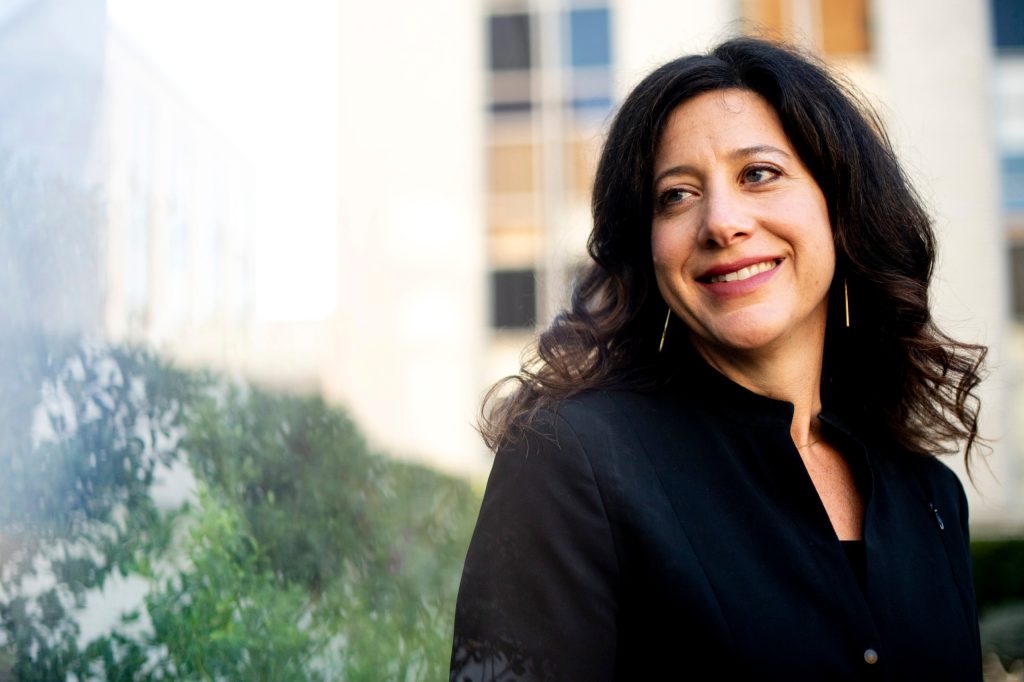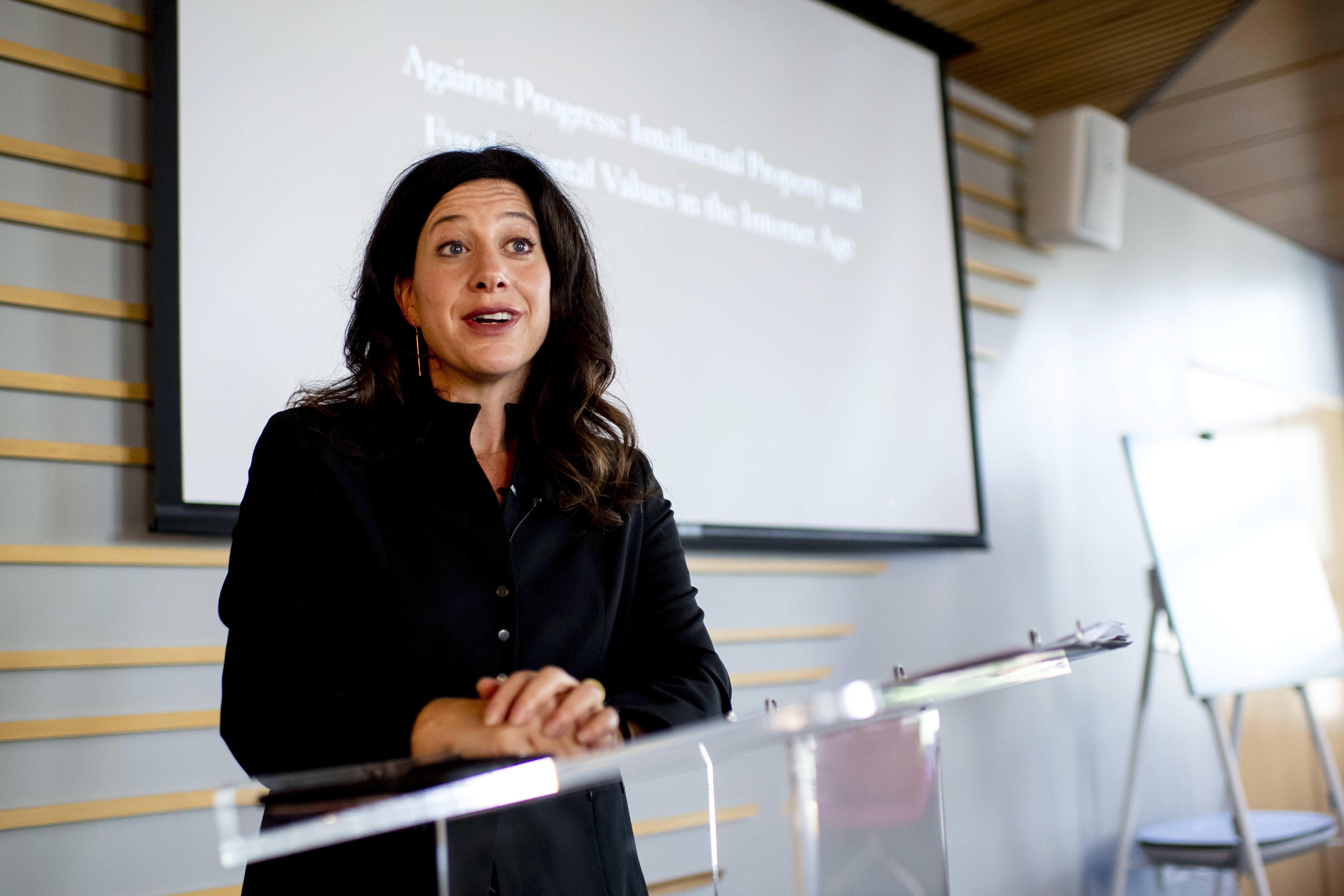Intellectual property in the 21st century will be shaped by values of justice and equality

If a monkey takes a selfie in a jungle, using equipment that doesn’t belong to him, does he own the rights to the photo? It’s a debate that intellectual property lawyers, scholars, and experts have been having for years—and not as a theoretical exercise.
As Jessica Silbey, a professor of law at Northeastern, tells it, this real controversy started nearly 10 years ago with Naruto, a macaque monkey from Indonesia, and a nature photographer named David Slater. Frustrated with the way his photos were coming out, Slater set up his camera in a way that encouraged a group of wild macaques to play with it and—he hoped—take their own photos. Naruto took the bait.

Jessica Silbey, professor of law, delivers her talk titled “Against Progress: Intellectual Property and Fundamental Values in the Internet Age” during the 56th Annual Robert D. Klein Lecture. Photo by Ruby Wallau/Northeastern University
Slater later sought to publish and license the photos, but was sued by the People for the Ethical Treatment of Animals, which claimed that the macaque should be assigned the copyright instead. A federal appeals court eventually ruled that Naruto does not have “the statutory standing” to claim copyright infringement against Slater.
Silbey, who directs the law school’s Center for Law, Innovation and Creativity, pointed out that the dispute gets to the heart of copyright authorship.
“These debates are not about markets and money,” she said at the 56th annual Robert D. Klein Lecture on Wednesday. “They are about what it means to be treated equally and with dignity, not only under copyright law, but more generally, and especially today, when the planet’s natural resources are becoming more scarce and when empathy and cooperation are necessary to survive.”
Silbey shared the anecdote as part of a presentation that covered the history and evolution of intellectual property—a body of law that includes copyright, trademark, and patent laws—from a “marginal legal subject” to a field that she said has become central to the practice and teaching of law.
Today, there are centers dedicated to the discipline of intellectual property. Intellectual property cases are reaching the Supreme Court at a faster clip than in previous decades. The field has become the subject of news headlines and television shows.
The growth of manufacturing and scientific discovery, and of the advertising and entertainment industries, drove the 20th century expansion of intellectual property. Moreover, this expansion fostered the growth of capitalized industries, employers with revenues in the billions, and jobs that made it possible to achieve the American dream.
In the 1970s, Silbey said, courts started asking whether an inventor could patent a living thing, fueling the biotechnology revolution. The inclusion of algorithms for business methods, processing and hedging risk, and storing or processing data resulted in more patents on the books, but also a rise in patent lawsuits.
And then the internet came along, bringing chaos to the field of intellectual law, and leading to legal battles that are no longer about markets or money.
“What we’re seeing is intellectual property shaped by fundamental values—values like equality, privacy, distributive justice, and institutional resiliency,” Silbey said.
Amid these ebbs and flows, the idea of progress has also changed, Silbey said. Intellectual property was once promoted as a way to protect markets and democracy. Today, many creators and innovators believe that intellectual property thwarts progress rather than promotes it, she said. Unlike their predecessors, these entrepreneurs consider copying and borrowing to be essential to their work. Why create a program from scratch, one software programmer told Silbey, if the algorithm already exists?
“These accounts describe a much more tolerant, much more generous regime in which the public domain is richer and bigger,” Silbey said. “And this resonates with the original meaning of the copyright and patent clause in the Constitution.”
Silbey concluded her talk by suggesting that these narratives should be given consideration as we collectively rethink progress in science and the arts—and chart a path forward in the 21st century “more aware than ever of our mutual interdependence and shared fate on the planet together.”
For media inquiries, please contact media@northeastern.edu.





